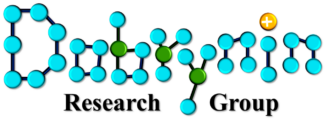Zhen Cao, Mark J. Stevens, and Andrey V. Dobrynin
We have developed a generalized model of particle-substrate interactions describing both adhesion and wetting behavior. Using a combination of the molecular dynamics simulations and scaling analysis we have shown that the crossover between adhesion and wetting-like behavior for a particle with size Rp and shear modulus Gp interacting with a substrate of shear modulus Gs is determined by the dimensionless parameter β ∝ γ*(G* Rp)−2/3W–1/3, where G* = GpGs/(Gp + Gs) is the effective shear modulus, W is the work of adhesion between particle and substrate, and γ* = Wgr + γp(1–2gr) + γspgr2 is the effective surface tension of the particle/substrate system with γp and γs being surface tensions of particle and substrate, γsp − surface tension of the particle-substrate interface, and gr = Gp/(Gp + Gs). This parameter β is proportional to the ratio of elastocapillary length γ*/G* and contact radius a, β ∝ γ*/G*a. In the limit of small values of the parameter β < 1, when the contact radius a is larger than the elastocapillary length γ*/G*, our model reproduces Johnson, Kendall, and Roberts results for particle adhesion on elastic substrates (adhesion regime). However, in the opposite limit, β > 1 (a < γ*/G*), the capillary forces play a dominant role and determine particle-substrate interactions (wetting regime). Model predictions are in a very good agreement with simulation and experimental results.

